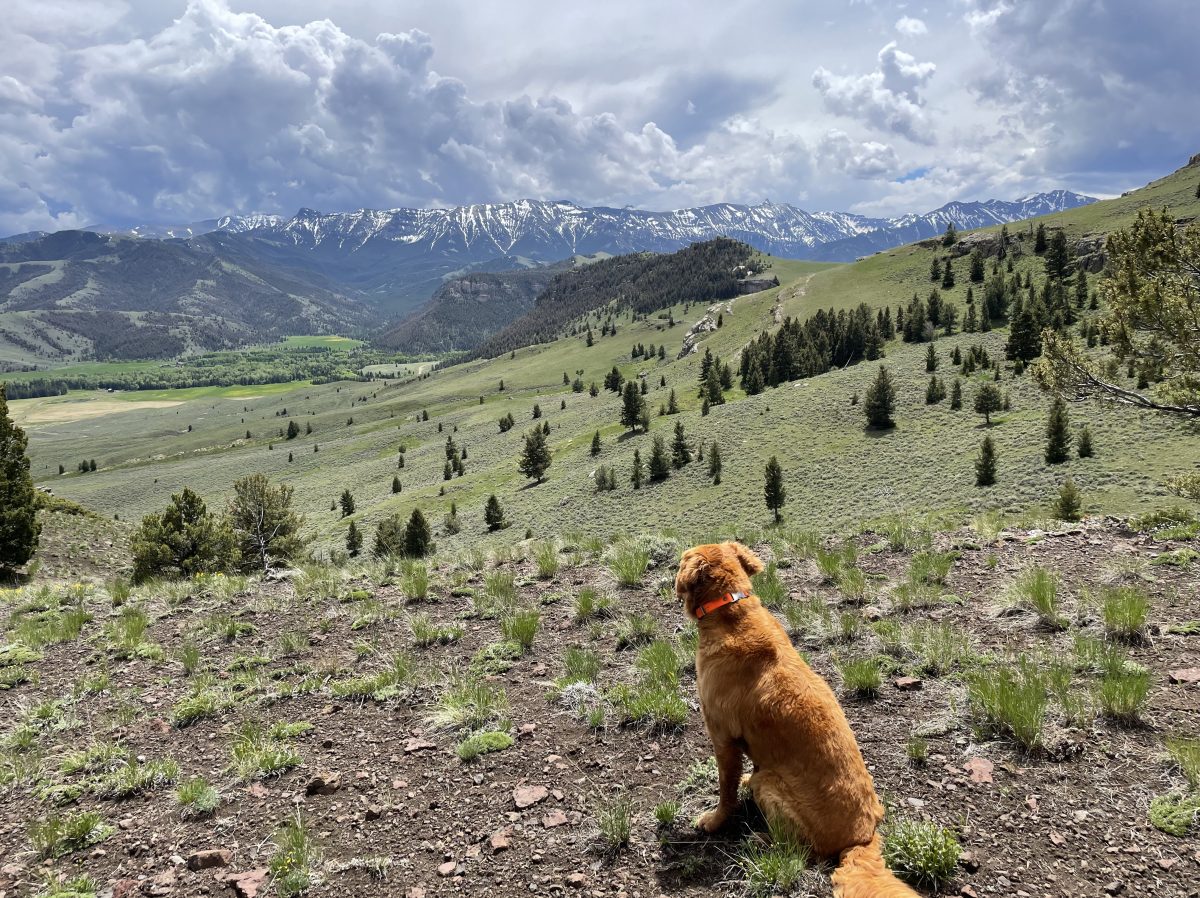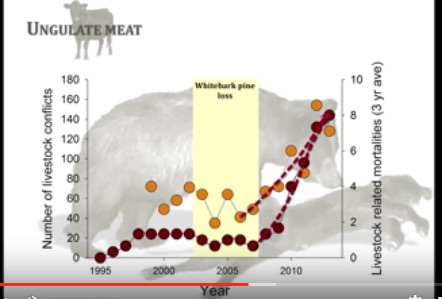I’d like to provide several links for people to educate themselves more on the topic of Grizzly Bears and delisting. Dr. David Mattson is considered one of the leading authorities on Grizzly bear foods, studying bears for over 35 years, over fifteen of which were Yellowstone bears. A recent talk given in Jackson, WY outlines Mattson’s reasons why we are having more conflicts with bears in recent years.
The Interagency Grizzly Bear Team, in their annual report outline states that bear populations have stayed flat since around 2002, yet because they are using new methods of calculating population size, the number they are reporting for GYE bears has risen. In other words, saying there are 750 (or even 1000) bears in the ecosystem in 2015 doesn’t mean we have increasing amounts of bears, but we are using different methods to figure out that population, which has remained flat since 2002. The Team’s reasoning for this is that the ecosystem is full. Mattson on the other hand shows in this presentation with a few interesting charts that the White Bark Pine losses to beetle kill (over 90% dead in the ecosystem) coincides with a rise in livestock conflicts hence grizzlies bears turning to meat for foods in fall. Notice that the loss of Whitebark coincides with that time period of 2002.
Mattson has a similar chart that shows a marked increase in hunter bear conflicts overlapping with diminished food sources, particularly white bark pine. Of course it is known that a good white bark pine season keeps bears up high, and pine cones fluctuate from year to year. But the marked increase coincides with loss of trees in the ecosystem.
Moreover, females who are the progenitor of the species, tend to avoid meat sources because of conflict with boar bears who might kill their cubs. The science indicates that sows with cubs who ate more white bark pine nuts tended to have 3 cubs while meat eating bears tended to have 2 and lose one or even one and lose that cub.
Put it all together, and Mattson’s argument is that first, our bears have flat-lined in population size since 2002, which the Agency Team agrees with. But his reason for the flat-lining isn’t that the ecosystem is full, but the bears are losing their primary food sources and extending out to the fringes of the ecosystem, looking for food sources that get them into human conflicts.
Mattson’s conclusion is the only way to insure the survival of the Yellowstone grizzly bear is by connecting habitat to bears northward. This would allow for genetic diversity and greater food sources, as well as account for climate change that will certainly change bear food sources further.
He also argues that it takes years to see changes in the population so why not wait 10 more years to consider the delisting argument? After 40 years of protections necessary to increase the population of grizzlies from 125 bears to 700 bears, why rush to delist now? Bears are facing an uncertain future. This year alone 43 bears were killed in conflicts, most of which were food related deaths. This number will increase for 2015 as hunters begin to go out into the field this fall.
To get a full understanding of what Grizzly bears in our ecosystem are facing, I highly recommend watching this talk.
More information on why it is premature to delist grizzlies can be obtained at this website here.



I’m very interested in this topic and really appreciate the video. I’d like to study the content a little more closely, and will. I recently found your blog through research leading me to your books, which have been helpful to me in our SoCal garden–currently a very “dry garden.” California once had grizzlies, too. 😦
LikeLike
Thanks Debra. Of course, the Grizzly Bear is on your flag! I recently read an interesting short history of the grizzly in CA. When the spaniards came and brought their cattle with them, they were mostly interested in using the cows for leather and not much for meat. They had a lot of cattle and very few people lived in CA. The cows were rounded up weekly or at least very often in death areas where they were slaughtered by the hundreds. Most of the meat was left in these large dumps. There was so much meat, that the bears regularly came to feed here. It is actually believed that there were more grizzlies after the spaniards came than before due to the abundance of the cattle dumps.
Of course, the spaniards were very cruel and had killings for sport with grizzlies, like they like to do with bulls. Some men became famous for their ability to rope grizzlies and kill them, etc. But it wasn’t until the whites came during the Gold Rush, along with white settlers, that the hunts to eradicate grizzlies began in earnest as there were just a lot more people who intended to farm and ranch.
LikeLike